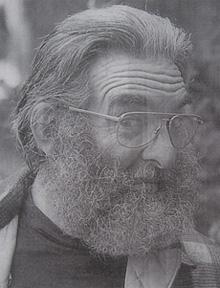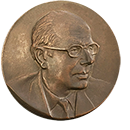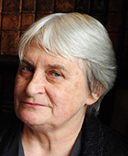Peter Reyner Banham
Peter Reyner Banham studied at the Courtauld Institute of Art, London, under Anthony Blunt, Siegfried Giedion and Nikolaus Pevsner. Following his own thesis Pioneers of the Modern Movement (1936), Pevsner invited Banham to study the History of Modern Architecture at the university.
Early in his career, Banham had connections with the collective of intellectuals and artists known as the Independent Group (IG), as well as the 1956 art exhibition This Is Tomorrow, considered by many to be the birth of Pop art.
Based in London, but from the mid 1970s primarily living in the United States, Banham went on to become a prolific architecture critic and writer, best known for his 1960 theoretical treatise Theory and Design in the First Machine Age. Through the text, Banham cut across his former teacher Pevsner’s main theories, linking modernism to built structures in which the ‘functionalism’ was actually subject to formal strictures.
His other great work Los Angeles: The Architecture of Four Ecologies, from 1971, categorised the Angelean experience into four ecological models, these being Surfurbia, Foothills, The Plains of Id, and Autopia, exploring through these models the distinct architectural cultures of each ecology. He also starred in the short documentary Reyner Banham loves Los Angeles and commented that he learned to drive so he could read the city in the original.
Banham predicted a “second age” of the machine and mass consumption as evidenced in Giedion’s Mechanization Takes Command (1948) and later The Architecture of Well-Tempered Environment (1969). He was also heavily influenced by the ‘New Brutalism’ of the Smithsons and of James Stirling, which he documented in his 1966 book The New Brutalism: Ethic or Aesthetic.
As a professor, Banham taught at the University of London, the State University of New York (SUNY) Buffalo, and through the 1980s at the University of California, Santa Cruz. He was appointed the Sheldon H. Solow Professor of the History of Architecture at the Institute of Fine Arts, New York University shortly before his death, but he never taught at the institution.





